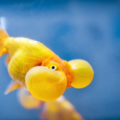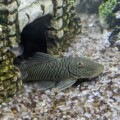Cory catfish, also known as Corydoras, are a popular choice for aquarium enthusiasts. These peaceful and playful fish are not only visually appealing but also provide numerous benefits to the tank ecosystem. One important consideration when keeping Cory catfish is determining the optimal number to keep in a tank. In this article, we will explore various factors that contribute to the recommended number of Cory catfish to maintain a thriving and harmonious environment.

Understanding the Nature of Cory Catfish
Before delving into the specifics of how many Cory catfish to keep together, it’s essential to understand the natural behavior and habitat of these fish.
Cory catfish are shoaling fish, which means they prefer to live and swim together in groups. In their natural environments, they form tight-knit communities, providing social interaction and safety in numbers.
Because of this shoaling behavior, it is highly recommended to keep a group of Cory catfish rather than solitary individuals. A group of these catfish will not only exhibit more natural behavior but also experience reduced stress levels, leading to better overall health and longevity.

Corydoras Catfish: Thriving in Groups
Cory cats, formally known as corydoras catfish, are delightful additions to freshwater aquariums. These social bottom feeders enjoy the company of their own kind. For optimal health and happiness, keep at least 6 corydoras catfish together.
A larger group will make them feel secure and showcase their fascinating natural behaviors. Just remember, more cory cats mean you may need more aquatic plants to provide hiding spots.
Determining the Ideal Number of Cory Catfish
The specific number of Cory catfish to keep together depends on several factors, including tank size, compatibility with other fish species, and the catfish’s well-being.
As a general guideline, it is recommended to keep a minimum of five Cory catfish in a tank. This number allows for the development of a cohesive social group and minimizes any potential aggression or stress.
While the minimum number is crucial, it is equally important not to overcrowd the tank. An overcrowded tank can lead to increased waste accumulation, poor water quality, and heightened competition for resources. As a result, it is best to consider the size of your tank when determining the maximum number of Cory catfish to keep.
As a rule of thumb, for every one gallon of water, you can keep approximately one inch of fully grown Cory catfish. However, keep in mind that Cory catfish require ample swimming space and hiding spots, so it’s essential to consider the tank’s dimensions and overall layout.

Community Considerations: Ideal Tankmates for Your Cory Cat
When choosing companions for your corydoras catfish, consider peaceful species that won’t pose a threat. Small tetras, ghost shrimp, and amano shrimp make excellent tankmates.
To ensure your cory cats get enough nutrition, avoid overly aggressive eaters or large fish that could outcompete them. Supplement their scavenging with bottom feeder tablets, as they won’t always find enough uneaten food.

Factors Influencing Cory Catfish Population
Several factors influence the number of Cory catfish that can be comfortably housed together. These factors include:
- Tank Size: A larger tank provides more room for a larger population of Cory catfish. Consider upgrading your tank if you wish to keep a larger group.
- Tank Mates: Take into account the other fish species in your tank. Some fish may be territorial, aggressive, or incompatible with Cory catfish. It is important to choose tank mates that are known to coexist harmoniously with Cory catfish.
- Species: Different Cory catfish species have various size requirements and temperament. Some species may be larger or more active than others, necessitating adjustments to the population size accordingly.
- Water Parameters: Cory catfish are relatively hardy, but it’s important to maintain suitable water parameters to ensure their well-being. Adequate filtration, regular water changes, and monitoring ammonia, nitrite, and nitrate levels are all essential.
By considering these factors and striking a balance, you can create an optimal environment for your Cory catfish population to thrive.
Species Spotlight – Panda Corydoras and Beyond
The charming panda corydoras is a popular choice, but there are many other beautiful cory cat varieties! Before mixing different species, research their compatibility and tank size requirements.
Keep in mind that corydoras eat decaying vegetation and may help keep the tank clean, but they won’t magically prevent issues like dead fish or decaying floating plants therefore regular tank maintenance is still essential

Conclusion
When it comes to housing Cory catfish, maintaining a suitable population size is vital. Keeping a group of five or more catfish allows them to engage in their natural shoaling behavior and ensures their overall well-being.
However, be mindful not to overcrowd the tank and consider factors such as tank size, compatibility with other fish species, and water parameters when determining the ideal number of Cory catfish to keep.
Remember, the goal is to create a harmonious environment where your Cory catfish can swim, play, and thrive. By providing them with a suitable habitat and companions, you can enjoy the delightful beauty and charm these unique catfish bring to your aquarium.










